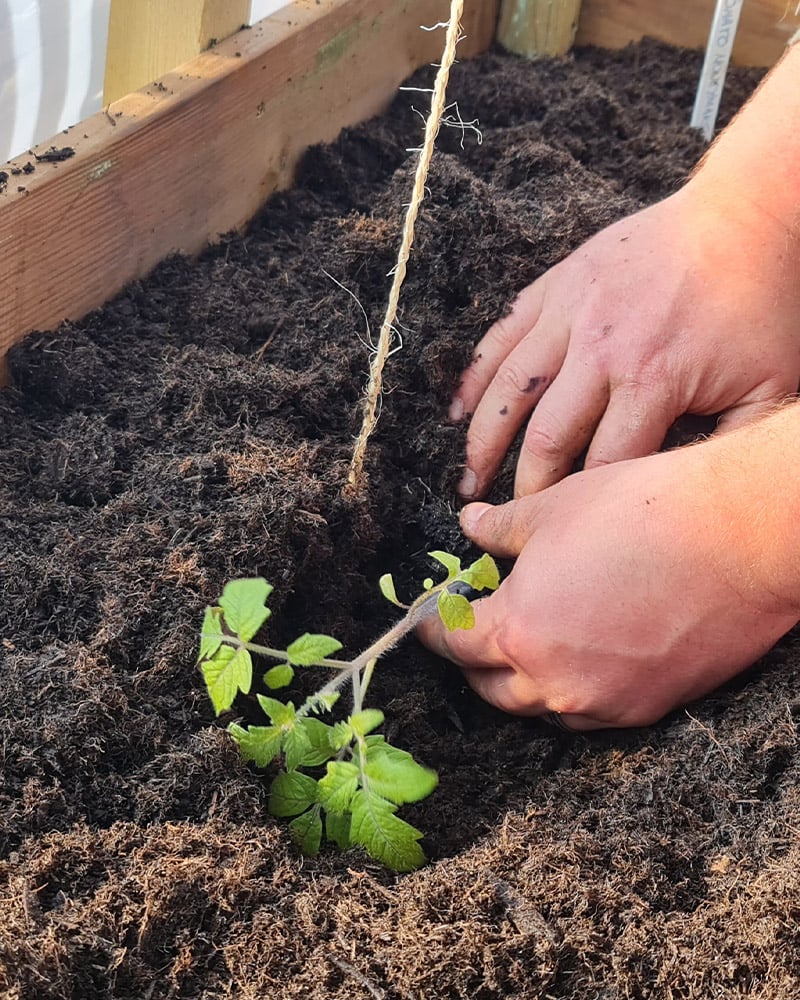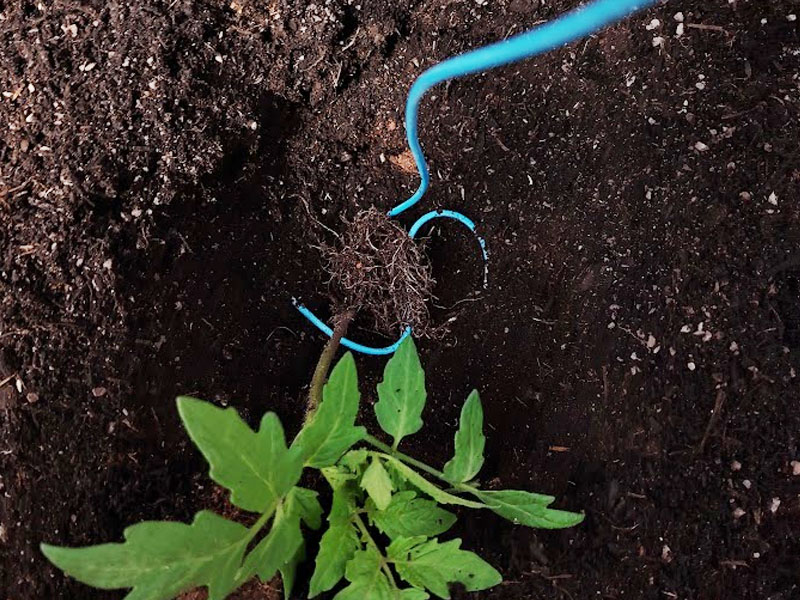If you want to grow bigger, tastier tomatoes this year, it all starts at planting time. A few simple tricks can make all the difference between a so-so crop and a bumper harvest. In this post, im lifting the lid on five tomato planting secrets that I use every year, and once you know them, you’ll never plant tomatoes the same way again.
Secret No. 1
If there is one thing you must do when planting tomatoes, then it is this: plant them deep, really deep.
This is because tomato plants have one key characteristic that many other plants do not have: they can develop roots from their stem.
If you deeply bury a tomato plant, roots will develop on the buried parts of the stem. This leads to powerful roots, which help support a large tomato plant and a lot of fruit.
However, there is even more you can do to encourage incredible growth at the time of planting. Read on to find out what...
How I Plant Tomatoes

I dig a really deep hole for my tomatoes to go into.
Before planting, I cut the lowest set of leaves off the tomato plants so I can get them even deeper.

Then pop your tomato plant into the hole. Go right up to where the bulk of the leaves are.

There we have it, one tomato planted deeply.
All that area of the stem that is now in the soil will develop roots. These roots will help anchor the plant (great if you are growing outdoors) and also provide an extensive root system to take up a significant amount of nutrients.
Sideways Planting

This method of planting tomatoes is gaining popularity. It serves the same purpose as planting deeply, from what I can see. You plant the stem sideways with just the top of the plant poking out above the soil.
I tried this last year, and it worked well, but there didn't seem to be any advantage over just planting the tomatoes deeply.
Secret No. 2
Fertilise that planting hole!
Tomatoes are heavy feeders, they need a good supply of nutrients throughout the growing season. Starting off with a nutrient-rich planting hole gives them an immediate boost and helps establish a strong, resilient plant. It also reduces the need for frequent feeding in the early stages.
There are a couple of feeds I will use depending on what I have available at the allotment at the time of planting. They are 6x and fish blood and bone. Whichever I have I will add a handful to the planting hole and mix it in well.
Secret No. 3
Use Microryhzal Fungi
Mycorrhizal fungi are beneficial soil organisms that form a symbiotic relationship with plant roots. Once established, the fungi grow tiny thread-like filaments (called hyphae) that extend far beyond the plant’s own roots. These filaments help the plant access water and nutrients, particularly phosphorus, more efficiently.
How to Apply Mycorrhizal Fungi When Planting
Applying mycorrhizal fungi is easy and takes just a moment when transplanting your tomatoes:
- Dig your planting hole as usual.
- Sprinkle the fungi (available as a dry powder or granules) directly onto the rootball of the tomato seedling or into the hole.
- Ensure contact: The spores must come into direct contact with the plant roots — that’s how colonisation begins.
- Backfill and water in as normal.
You only need to apply it once per plant, at the time of planting. It’s suitable for both in-ground and container-grown tomatoes.
Secret No. 4
Bury Some String!
If you are planning on growing your tomato plants up string, which I do reccomend, then now is a great time to bury the string under the rootball of your tomato plant.
This means you dont have to tie the string to the stem of the plant later on, which can restrict growth and harm the plant. I like to tie multiple knots and loops in the string, bury it in the planting hole, and then plant your tomato on top of this.
I have found this to be sufficient, and it rarely comes loose. However, even if it does, you can always tie the string around the stem at that point.

Secret No. 5
Volcanic Rock Dust...
Volcanic rock dust is a natural soil amendment made from finely ground volcanic rock. It’s rich in minerals and trace elements, making it a valuable addition when planting tomatoes, particularly in soil that’s been used for several seasons or lacks vitality.
Volcanic rock dust is packed with a wide range of minerals and micronutrients, including:
- Calcium
- Magnesium
- Potassium
- Iron
- Zinc
- Manganese
- Silica
These nutrients support overall plant health, strong growth, and improved fruit quality. While NPK fertilisers supply the main macronutrients (nitrogen, phosphorus, potassium), rock dust provides the full spectrum of trace elements often missing poor commercial composts or tired soils.




Brian Dyce says
Thanks for your tips
Stuart Gregory says
Great advice and enjoyed reading this so hopefully your tips will pay dividends to my crop.
Keith Nicklin says
Thanks for these tips. I have a system where I can water from the bottom. I never get blossom end rot. Also I found by removing the bottom leaves as they start to curl up. Prevents slugs. I also cover the soil with broken egg shells